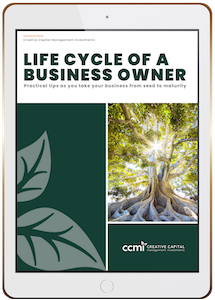As 2022 quickly draws to a close, there are various planning issues to consider that may affect your tax payments and financial situation in 2023. We want to help you finish the year financially strong and confident so we’ve compiled a year-end checklist of tax-planning strategies to help you prepare. The list considers various aspects of your finances, designed to help you minimize risk, maximize income, and hopefully help you avoid stress and unwanted surprises in the new year.
Investment Management
- Unrealized Investment Losses: Do you have unrealized investment losses in your taxable accounts? You may consider realizing the losses or selling the holding to offset any capital gains. According to IRS guidelines, you may also be able to write off up to $3,000 against ordinary income while carrying forward any unused capital losses above that amount to future years.
- Capital Gains: If you have investments in a taxable account subject to capital gain distributions, evaluate strategies that may minimize your tax liability. If the distribution is larger than your overall capital gain in the holding, you may be better off selling the holding before the distribution. The nature and timing of the distribution, along with your unrealized gain or loss, are all factors to consider.
- Tax Loss Harvesting: Think about harvesting taxable gains. There is no federal tax on long-term capital gains for single filers with less than $40,400 in income or married couples filing jointly (or widow(er)s) with less than $80,800 in income. Because this approach will likely affect other areas like state taxes, your adjusted gross income, and Social Security and Medicare premiums, it’s beneficial to consult a financial advisor to determine your best course of action.
Retirement and Other Savings Accounts
- Required Minimum Distributions (RMDs): If you are age 72 or older, make sure you take your required minimum distribution, if necessary. You can aggregate RMDs from multiple traditional IRAs, excluding inherited IRAs. Employer retirement plans generally must also be taken separately, with some exceptions.
- Health Savings Account: If you’re eligible and have excess funds, consider maxing out your HSA contributions. Any unused HSA funds will continue to grow tax-free year after year and may be used for qualified expenses now and in retirement.
- 529 Plan: You may consider making a tax-free contribution to a beneficiary’s 529 plan up to the annual exclusion limit of $16,000 for 2022. You can also use the “5-year rule,” an exception allowing you to gift five years’ worth of tax-free contributions in a single year and treat it as a gift over a five-year period.
Income
- Tax Brackets: If you are on the threshold of a tax bracket, consider ways to:
- Defer income
- Accelerate deductions
- Minimize capital gains
- Stay in the lower tax bracket
If you are on Medicare, be aware of the tax breakpoints at which your Medicare premiums increase.
- Expecting a Windfall: If you are receiving significant windfalls from the sale of a business or real estate, restricted stock units (RSUs), stock options, or bonus that could affect your tax liability, review your tax withholdings to determine if estimated payments are required and if there are ways to offset the increase in your income.
If You Expect Your Income Will Increase
If you expect your income to increase in the future, you may consider the following strategies to be more strategic on your tax payments and maximize your tax-free growth.
- Roth Accounts: Contributions to a Roth IRA and 401(k) grow tax-deferred. Contributing before your income increases will potentially help you save more over time.
- If your employer offers a Roth 401(k) with matching, its contributions will also grow tax-deferred.
- Roth IRA contributions have income limits, while Roth 401(k) contributions do not.
- Use after-tax dollars to contribute up to $20,500 (or $27,000 if over age 50) in 2022 to a Roth 401(k).
- Remember that you will be subject to required minimum distributions if you do not roll over your 401(k) to a Roth IRA once you stop working.
- Roth Conversions: You can also consider converting a traditional IRA to a Roth account. While you’ll pay taxes at the time of the conversion, you can avoid a larger payment later when your income is higher and enjoy tax-free withdrawals in retirement.
- Convert a portion of your traditional IRA to a Roth IRA, something that may be available in some 401(k) plans too.
- Your converted portion of your pre-tax traditional IRA is included in your income in the year of conversion.
- Work with CCMI’s CERTIFIED FINANCIAL PLANNER™ professionals or your accountant to make sure you understand the tax consequences and convert the appropriate amount.
- After-Tax Contributions: The after-tax 401(k) contribution limit for 2022 is $61,000, which allows you to continue saving after you’ve met your pre-tax contribution limit of $20,500.
- Backdoor Roth Conversions: This conversion involves converting a traditional IRA to a Roth IRA to benefit from tax-free growth after that. Consider the following:
-
- You must have taxable compensation or earned income.
- You would first contribute to a traditional IRA, which would likely be a non-deductible contribution as there are no income limitations.
- You could then convert the traditional IRA to a Roth IRA and pay the taxes due at that time.
- Be aware of aggregation rules that would affect the taxability of your conversion if you have other tax-deferred assets in an IRA.
- Mega Backdoor Roth: A mega backdoor Roth strategy is a conversion involving your employer-sponsored 401(k) and after-tax contributions, after which you can enjoy tax-free growth.
-
- Check if your employer allows this strategy in your 401(k) savings plan.
- Contribute after-tax dollars to your employer’s plan. The formula for how much you can contribute is the 2022 defined contribution limit of $61,000 minus the 2022 employee contribution limit of $20,500, minus any employer matching.
- Convert after-tax contributions to a Roth IRA and pay any taxes due on the growth, if any.
- Note that not all employer plans allow for after-tax contributions, in-plan conversions, or in-plan distributions, which could eliminate this tactic for many. It is also a fairly complex process so we recommend you consult a financial professional.
- IRA Withdrawals: If over age 59½, determine if accelerating traditional IRA withdrawals in lower tax brackets is advantageous.
If You Expect Your Income Will Decrease
Traditional IRA and 401(k) Contributions:
- If you expect your income to decrease in the future, try to find ways to:
- Minimize your tax liability now
- Contribute to a traditional IRA or 401(k) to reduce your income
- If possible, maximize your contributions based on your age for 2022
Charitable Contributions and Gifting
- Evaluate tax-efficient charitable strategies like setting up a donor-advised fund or making a qualified charitable distribution from your IRA (only available for those over 70).
- Consider “bunching” multiple years of your charitable contributions into one year so you can itemize larger deductions rather than take the standard deduction.
- Consider gifting before the end of the year up to the annual exclusion of $17,000 per donee to your heirs. You can give tax-free per year, per donee up to the annual exclusion amount.
Business Owners
- If you own a pass-through business, evaluate the Qualified Business Income (QBI) Deduction eligibility rules.
- Fund a retirement plan and evaluate how it will impact your taxable income and QBI.
- Consider whether it makes sense to defer or accelerate income or expenses based on your current and future tax situation and revenue projections.
General
- If your marital status changes as of December 31, consider how this will impact your tax liability.
- If you have a Flexible Spending Account (FSA), make sure you use it before the end of the year, as most plans forfeit unused funds.
- If you met your health insurance plan’s annual deductible, get as many medical expenses covered now before the deductible resets.
- Review your financial plan to evaluate your performance against your goals and consider setting new objectives for next year.
Everyone’s financial situation is different, potentially requiring a different tax-planning approach. While this list is not exhaustive of every situation, we’re happy to learn more about your needs and help you develop a customized strategy. Contact our team to discuss and ensure you best position your finances and taxes for the new year.
PLEASE SEE IMPORTANT DISCLOSURE INFORMATION at https://myccmi.com/important-disclosures/
CCMI provides personalized fee-only financial planning and investment management services to business owners, professionals, individuals and families in San Diego and throughout the country. CCMI has a team of CERTIFIED FINANCIAL PLANNERTM professionals who act as fiduciaries, which means our clients’ interests always come first.
How can we help you?






